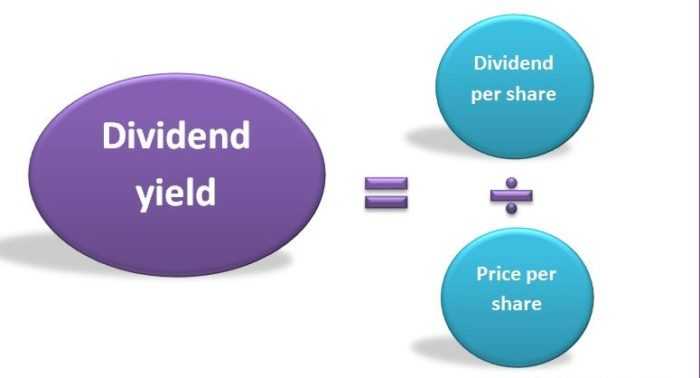A basic mistake is considering the closing prices of stocks for analysis instead of Adjusted closing price.
If you’re a beginner in investing, you probably already noticed the expression like “closing price” or “adjusted closing price.” These two phrases refer to different ways of valuing stocks. While with the term “closing price” everything is clear when it comes to the term “adjusted closing price” things are more complex.
When we say closing price it refers to the stock price at the close of the trading day. But to understand the adjusted closing price you will need to take the closing price as a starting but you’ll have to take into account some other factors too to determine the value of the stock. Factors like stock split, dividends, stock offerings can change the closing price. So we can say that the adjusted closing price gives us more exact the value of the stock.
What is Adjusted Closing Price
Adjusted closing price changes a stock’s closing price to correctly reveal that stock’s value after accounting for every action of some company. So, it is recognized as the accurate price of the stock. It is necessary when you want to examine historical returns.
Let’s say this way, the closing price is just the amount of cash paid in the last transaction before the closing bell. But the adjusted closing price will take into account anything that might have an influence on the stock price after the closing bell. When we say anything it is literally anything: demand, supply, company’s actions, dividends distribution, stock splits, etc. So, you will need adjustments to unveil the true value of the stock.
It is particularly helpful when examining historical returns. Let’s do that on an example of dividend adjustment calculation.
 The adjusted closing price for dividends
The adjusted closing price for dividends
When a stock increases in value, the company may reward stockholders with a dividend. It can be in cash or as an added percentage of shares. Whatever, a dividend will decrease the stock’s value since the company will get rid of the part of its value when paying out the dividends. So, the adjusted closing price is important because it shows the stock’s value after dividends are posted.
Subtract the amount of dividend from the previous day’s price. Divide this result by the same day’s price. Finally, multiply historical prices by this last figure.
For example, the prior trading day was Tuesday and a stock closing price was $50. The day after, on Wednesday, it starts trading at a last price minus dividend, for example, trading ex-dividend based on a $4, so the stock will be trading on Wednesday at $46. If we don’t adjust the last price the data, for example, the charts will show a $4 gap.
What do we have to do?
We have to calculate the adjustment factor,
So, by following already described we have to subtract the $4 dividend from the closing stock price on Tuesday (in our case)
$50 – $4 = $46
Further, we have to divide 46.00 by 50.00 to determine the dividend adjustment in percentages.
46.00 / 50.00 = 0.92
The result is 0.92.
Let’s see how to adjust the historical price.
The next step is to multiply all historical prices preceding the dividend by this factor of 0.80. This will alter the historical prices proportionately and they will stay logically adjusted with current prices.
After stock splits
Stocks split occurs when the price of individual shares is too high. So, the company may decide to split stocks into shares. When the company increases the number of shares, the logical consequence is the value of each share will decrease due to the fact that each share factors a smaller percentage.
In our example, if the company splits each $50 share into two $25 shares, the adjusted closing price from the day prior to the split is $25. The adjustment reveals the stock split, not a 50% decline in the share price.
New Offerings
For example, the company decided to offer extra shares to boost capital. This means the company issues new shares of stock in a rights offering. The right offering means that the shareholders have the chance to buy the new shares at lessened prices.
But what happens when new shares come to the market? The price of the shares, of the same company, that are already on the market will drop. How is that possible? Well, think! The number of shares is increased and each of them now cost less. It’s almost the same with a stock split.
The adjusted closing price values the new offerings and the devaluation of each individual stock.
Find a stock return
A stock’s adjusted closing price provides you all the info you need to watch closely to your stock. You can use some other methods to calculate returns, but adjusted closing prices will spare you time. As we see in the text above, adjusted closing prices are already adjusted. The dividends are posted, the stock’s splits are done, the rights offerings also. So we can make a more realistic return calculation. The adjusted closing prices can be an excellent tool that can help us improve our strategies. Moreover, we can do that in a short time since the adjusted closing price already took into account almost all factors that directly impact the overall return. For example, just compare the adjusted price for a particular stock over some given period and you will find its return.
It’s easy to find historical price data, just download it. Further, mark the column of dates and a matching column for adjusted closing prices and set up in descending order. For example, you want to examine a period from March to October. On the top, you should have data for March and below data for April and so.
Let’s find the return
Firstly, compare the closing price in one month to the closing price from the prior month. To unveil the percentage of return you have to divide the chosen month’s price by the previous month’s price. Subtract the number 1 from that result, then this new result you have to multiply by 100 to turn it from decimal to percentage form.
It should look like this:
In March stock price was $50, in April it was $55, so the return was 10%
((55/50)-1)x100 = 10
Since you have to do this calculation for each month add the column for return if you are working in a spreadsheet.
To calculate the average return for the given period, from March to October, just sum each return for all months you observe and divide the result by the number of months.
Simple as that.
Bottom line
The adjusted closing price is a stock’s closing price on any chosen trading day but altered to cover dividends posted and the company’s actions like split shares and the rights offerings that happened at any time former to the next day’s open.
So, you can see that for serious analysis, the closing price will never reveal the real value of the stock, the stock’s value after considering any company’s actions. So it is always suggested to use the adjusted closing price if you want reliable analysis.



